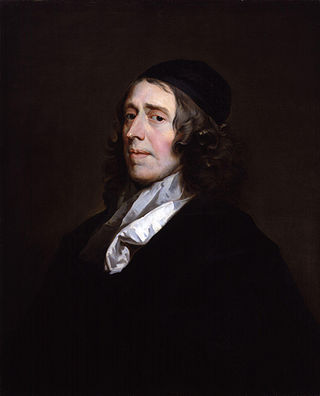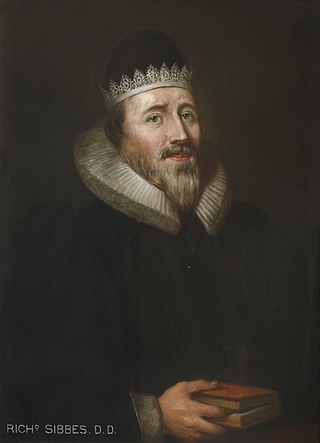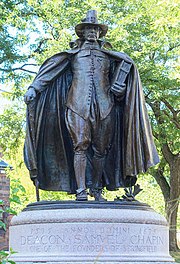
Arminianism is a movement of Protestantism initiated in the early 17th century, based on the theological ideas of the Dutch Reformed theologian Jacobus Arminius and his historic supporters known as Remonstrants. Dutch Arminianism was originally articulated in the Remonstrance (1610), a theological statement submitted to the States General of the Netherlands. This expressed an attempt to moderate the doctrines of Calvinism related to its interpretation of predestination.

Reformed Christianity, also called Calvinism, is a major branch of Protestantism that began during the sixteenth-century Protestant Reformation, a schism in the Western Church. In the modern day, it is largely represented by the Continental Reformed, Presbyterian, and Congregational traditions, as well as parts of the Anglican and Baptist traditions.

The Puritans were English Protestants in the 16th and 17th centuries who sought to rid the Church of England of what they considered to be Roman Catholic practices, maintaining that the Church of England had not been fully reformed and should become more Protestant. Puritanism played a significant role in English and early American history, especially in the Protectorate in Great Britain, and the earlier settlement of New England.

John Owen was an English Puritan Nonconformist church leader, theologian, and vice-chancellor of the University of Oxford. One of the most prominent theologians in England during his lifetime, Owen was a prolific author who wrote articles, treatises, Biblical commentaries, poetry, children's catechisms, and other works. Many of Owen's works reflect his Calvinist interpretation of Scripture. Owen is still widely read by Calvinists today, and is known particularly for his writings on sin and human depravity.

The Elizabethan Religious Settlement is the name given to the religious and political arrangements made for England during the reign of Elizabeth I (1558–1603). The settlement, implemented from 1559 to 1563, marked the end of the English Reformation. It permanently shaped the Church of England's doctrine and liturgy, laying the foundation for the unique identity of Anglicanism.
Via media is a Latin phrase meaning "the middle road" or the "way between two extremes".

Richard Sibbes (1577–1635) was an Anglican theologian. He is known as a Biblical exegete, and as a representative, with William Perkins and John Preston, of what has been called "main-line" Puritanism because he always remained in the Church of England and worshiped according to the Book of Common Prayer.
The Twenty-five Articles of Religion are an official doctrinal statement of Methodism—particularly American Methodism and its offshoots. John Wesley abridged the Thirty-nine Articles of the Church of England, removing the Calvinistic parts among others, reflecting Wesley's Arminian theology.

The history of the Calvinist–Arminian debate begins in the early 17th century in the Netherlands with a Christian theological dispute between the followers of John Calvin and Jacobus Arminius, and continues today among some Protestants, particularly evangelicals. The debate centers around soteriology, the study of salvation, and includes disputes about total depravity, predestination, and atonement. While the debate was given its Calvinist–Arminian form in the 17th century, issues central to the debate have been discussed in Christianity in some form since Augustine of Hippo's disputes with the Pelagians in the 5th century.
Anglican doctrine is the body of Christian teachings used to guide the religious and moral practices of Anglicanism.

The Lambeth Articles of 1595 were nine doctrinal statements on the topic of predestination proposed by the bishops of the Church of England. At the time, there was controversy between Calvinists and non-Calvinists over predestination, and the Lambeth Articles were written to clarify the church's official teaching. William Whitaker, an eminent Reformed theologian, served as the primary author.

James VI and I, King of Scotland, King of England and King of Ireland, faced many complicated religious challenges during his reigns in Scotland and England.
Baptist beliefs are not completely consistent from one church to another, as Baptists do not have a central governing authority. However, Baptists do hold some common beliefs among almost all Baptist churches.

Laudianism, also called Old High Churchmanship, or Orthodox Anglicanism as they styled themselves when debating the Tractarians, was an early seventeenth-century reform movement within the Church of England that tried to avoid the extremes of Roman Catholicism and Puritanism by building on the work of Richard Hooker, and John Jewel and was promulgated by Archbishop William Laud and his supporters. It rejected the predestination upheld by Calvinism in favour of free will, and hence the possibility of salvation for all men through objective work of the sacraments. Laudianism had a significant impact on the Anglican high church movement and its emphasis on the sacraments, personal holiness, beautiful liturgy, and the episcopate. Laudianism was the culmination of the move to Arminianism in the Church of England, and led directly to the Caroline Divines, of which Laud was one of the first. The expression of this since the Oxford movement is often called Central churchmanship
Patrick "Pat" Collinson, was an English historian, known as a writer on the Elizabethan era, particularly Elizabethan Puritanism. He was emeritus Regius Professor of Modern History, University of Cambridge, having occupied the chair from 1988 to 1996. He once described himself as "an early modernist with a prime interest in the history of England in the sixteenth and seventeenth centuries."

Protestantism is a branch of Christianity that emphasizes justification of sinners through faith alone, the teaching that salvation comes by unmerited divine grace, the priesthood of all believers, and the Bible as the sole infallible source of authority for Christian faith and practice. The five solae summarize the basic theological beliefs of mainstream Protestantism.

The reign of King James I of England (1603–1625) saw the continued rise of the Puritan movement in England, that began during reign of Queen Elizabeth (1558–1603), and the continued clash with the authorities of the Church of England. This eventually led to the further alienation of Anglicans and Puritans from one another in the 17th century during the reign of King Charles I (1625–1649), that eventually brought about the English Civil War (1642–1651), the brief rule of the Puritan Lord Protector of England Oliver Cromwell (1653–1658), the English Commonwealth (1649–1660), and as a result the political, religious, and civil liberty that is celebrated today in all English speaking countries.
The Westminster Conference of 1559 was a religious disputation held early in the reign of Elizabeth I of England. Although the proceedings themselves were perfunctory, the outcome shaped the Elizabethan religious settlement and resulted in the authorisation of the 1559 Book of Common Prayer.

Arminianism was a controversial theological position within the Church of England particularly evident in the second quarter of the 17th century. A key element was the rejection of predestination. The Puritans fought against Arminianism, and King James I of England opposed it before, during, and after the Synod of Dort, 1618–1619, where the English delegates participated in formulating the Calvinist Canons of Dort, but his son Charles I, favoured it, leading to deep political battles. The Methodists, who espoused a variant of the school of thought called Wesleyan–Arminian theology, branched off the Church of England in the 18th century.
A Christian funeral sermon is a formal religious oration or address given at a funeral ceremony, or sometimes a short time after, which may combine elements of eulogy with biographical comments and expository preaching. To qualify as a sermon, it should be based on a scriptural text. Historically such sermons were very often prepared for publication, and played a significant part in Lutheran, and later in Puritan, presbyterian, and nonconformist literary cultures, in Europe and New England. They also were and are common in Christian denominations generally.












